Nov
2018
Digital Accessibility ebooks
Digital Accessibility as a Business Practice
Professional Web Accessibility Auditing Made Easy
=+++++++++++++++
more on UDL in this IMS blog
https://blog.stcloudstate.edu/ims?s=universal+design
Digital Literacy for St. Cloud State University
Digital Accessibility as a Business Practice
Professional Web Accessibility Auditing Made Easy
=+++++++++++++++
more on UDL in this IMS blog
https://blog.stcloudstate.edu/ims?s=universal+design
https://www.educause.edu/eli/initiatives/key-issues-in-teaching-and-learning
A roster of results since 2011 is here.
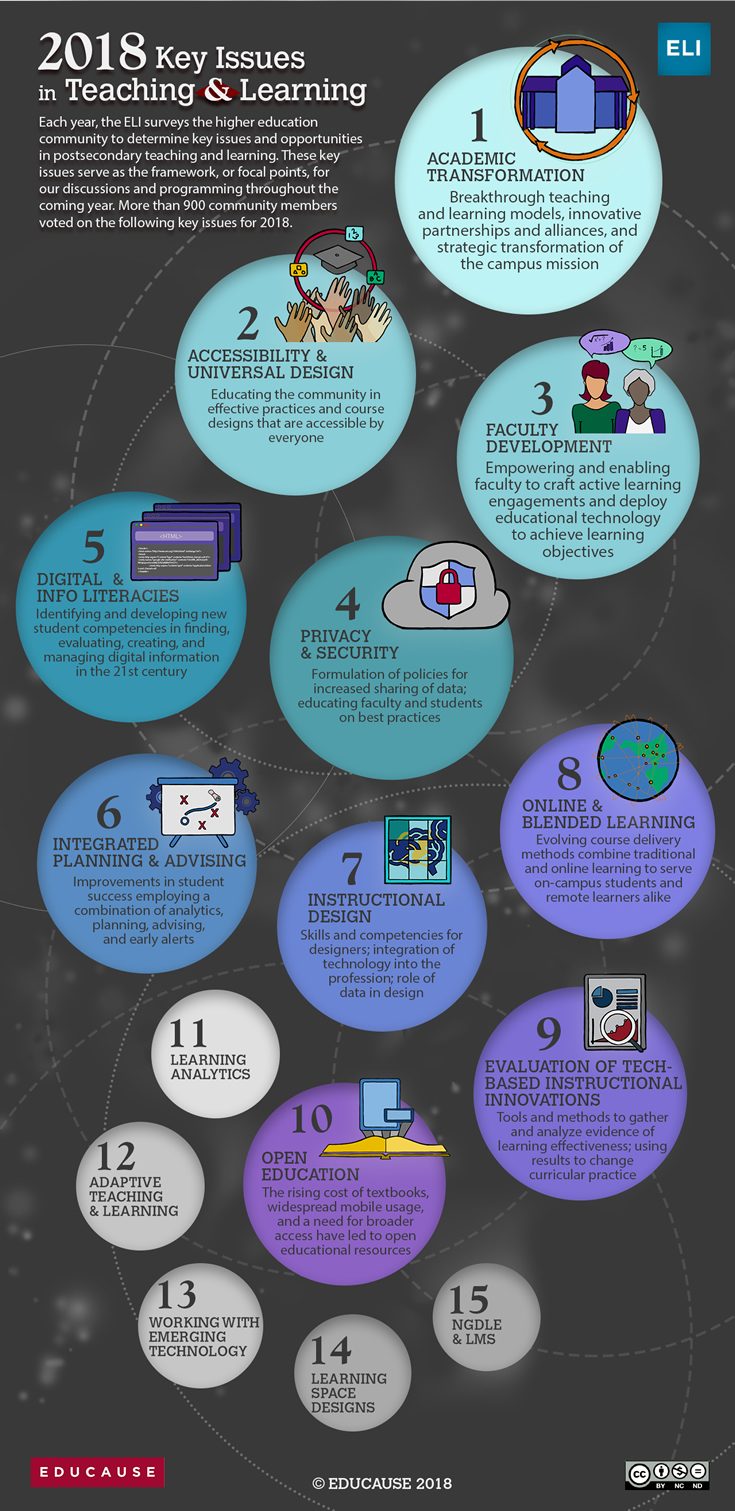
https://cdn.nmc.org/media/2017-nmc-strategic-brief-digital-literacy-in-higher-education-II.pdf
Three Models of Digital Literacy: Universal, Creative, Literacy Across Disciplines
United States digital literacy frameworks tend to focus on educational policy details and personal empowerment, the latter encouraging learners to become more effective students, better creators, smarter information consumers, and more influential members of their community.
National policies are vitally important in European digital literacy work, unsurprising for a continent well populated with nation-states and struggling to redefine itself, while still trying to grow economies in the wake of the 2008 financial crisis and subsequent financial pressures
African digital literacy is more business-oriented.
Middle Eastern nations offer yet another variation, with a strong focus on media literacy. As with other regions, this can be a response to countries with strong state influence or control over local media. It can also represent a drive to produce more locally-sourced content, as opposed to consuming material from abroad, which may elicit criticism of neocolonialism or religious challenges.
p. 14 Digital literacy for Humanities: What does it mean to be digitally literate in history, literature, or philosophy? Creativity in these disciplines often involves textuality, given the large role writing plays in them, as, for example, in the Folger Shakespeare Library’s instructor’s guide. In the digital realm, this can include web-based writing through social media, along with the creation of multimedia projects through posters, presentations, and video. Information literacy remains a key part of digital literacy in the humanities. The digital humanities movement has not seen much connection with digital literacy, unfortunately, but their alignment seems likely, given the turn toward using digital technologies to explore humanities questions. That development could then foster a spread of other technologies and approaches to the rest of the humanities, including mapping, data visualization, text mining, web-based digital archives, and “distant reading” (working with very large bodies of texts). The digital humanities’ emphasis on making projects may also increase
Digital Literacy for Business: Digital literacy in this world is focused on manipulation of data, from spreadsheets to more advanced modeling software, leading up to degrees in management information systems. Management classes unsurprisingly focus on how to organize people working on and with digital tools.
Digital Literacy for Computer Science: Naturally, coding appears as a central competency within this discipline. Other aspects of the digital world feature prominently, including hardware and network architecture. Some courses housed within the computer science discipline offer a deeper examination of the impact of computing on society and politics, along with how to use digital tools. Media production plays a minor role here, beyond publications (posters, videos), as many institutions assign multimedia to other departments. Looking forward to a future when automation has become both more widespread and powerful, developing artificial intelligence projects will potentially play a role in computer science literacy.
In traditional instruction, students’ first contact with new ideas happens in class, usually through direct instruction from the professor; after exposure to the basics, students are turned out of the classroom to tackle the most difficult tasks in learning — those that involve application, analysis, synthesis, and creativity — in their individual spaces. Flipped learning reverses this, by moving first contact with new concepts to the individual space and using the newly-expanded time in class for students to pursue difficult, higher-level tasks together, with the instructor as a guide.
Let’s take a look at some of the myths about flipped learning and try to find the facts.
Myth: Flipped learning is predicated on recording videos for students to watch before class.
Fact: Flipped learning does not require video. Although many real-life implementations of flipped learning use video, there’s nothing that says video must be used. In fact, one of the earliest instances of flipped learning — Eric Mazur’s peer instruction concept, used in Harvard physics classes — uses no video but rather an online text outfitted with social annotation software. And one of the most successful public instances of flipped learning, an edX course on numerical methods designed by Lorena Barba of George Washington University, uses precisely one video. Video is simply not necessary for flipped learning, and many alternatives to video can lead to effective flipped learning environments [http://rtalbert.org/flipped-learning-without-video/].
Myth: Flipped learning replaces face-to-face teaching.
Fact: Flipped learning optimizes face-to-face teaching. Flipped learning may (but does not always) replace lectures in class, but this is not to say that it replaces teaching. Teaching and “telling” are not the same thing.
Myth: Flipped learning has no evidence to back up its effectiveness.
Fact: Flipped learning research is growing at an exponential pace and has been since at least 2014. That research — 131 peer-reviewed articles in the first half of 2017 alone — includes results from primary, secondary, and postsecondary education in nearly every discipline, most showing significant improvements in student learning, motivation, and critical thinking skills.
Myth: Flipped learning is a fad.
Fact: Flipped learning has been with us in the form defined here for nearly 20 years.
Myth: People have been doing flipped learning for centuries.
Fact: Flipped learning is not just a rebranding of old techniques. The basic concept of students doing individually active work to encounter new ideas that are then built upon in class is almost as old as the university itself. So flipped learning is, in a real sense, a modern means of returning higher education to its roots. Even so, flipped learning is different from these time-honored techniques.
Myth: Students and professors prefer lecture over flipped learning.
Fact: Students and professors embrace flipped learning once they understand the benefits. It’s true that professors often enjoy their lectures, and students often enjoy being lectured to. But the question is not who “enjoys” what, but rather what helps students learn the best.They know what the research says about the effectiveness of active learning
Assertion: Flipped learning provides a platform for implementing active learning in a way that works powerfully for students.

What is the total cost of my innovation, including both new spending and the use of existing resources?
What’s the unit I should measure that connects cost with a change in performance?
How might the expected change in student performance also support a more sustainable financial model?
The Exposure Approach: we don’t provide a way for participants to determine if they learned anything new or now have the confidence or competence to apply what they learned.
The Exemplar Approach: from ‘show and tell’ for adults to show, tell, do and learn.
The Tutorial Approach: Getting a group that can meet at the same time and place can be challenging. That is why many faculty report a preference for self-paced professional development.build in simple self-assessment checks. We can add prompts that invite people to engage in some sort of follow up activity with a colleague. We can also add an elective option for faculty in a tutorial to actually create or do something with what they learned and then submit it for direct or narrative feedback.
The Course Approach: a non-credit format, these have the benefits of a more structured and lengthy learning experience, even if they are just three to five-week short courses that meet online or in-person once every week or two.involve badges, portfolios, peer assessment, self-assessment, or one-on-one feedback from a facilitator
The Academy Approach: like the course approach, is one that tends to be a deeper and more extended experience. People might gather in a cohort over a year or longer.Assessment through coaching and mentoring, the use of portfolios, peer feedback and much more can be easily incorporated to add a rich assessment element to such longer-term professional development programs.
The Mentoring Approach: The mentors often don’t set specific learning goals with the mentee. Instead, it is often a set of structured meetings, but also someone to whom mentees can turn with questions and tips along the way.
The Coaching Approach: A mentor tends to be a broader type of relationship with a person.A coaching relationship tends to be more focused upon specific goals, tasks or outcomes.
The Peer Approach:This can be done on a 1:1 basis or in small groups, where those who are teaching the same courses are able to compare notes on curricula and teaching models. They might give each other feedback on how to teach certain concepts, how to write syllabi, how to handle certain teaching and learning challenges, and much more. Faculty might sit in on each other’s courses, observe, and give feedback afterward.
The Self-Directed Approach:a self-assessment strategy such as setting goals and creating simple checklists and rubrics to monitor our progress. Or, we invite feedback from colleagues, often in a narrative and/or informal format. We might also create a portfolio of our work, or engage in some sort of learning journal that documents our thoughts, experiments, experiences, and learning along the way.
The Buffet Approach:

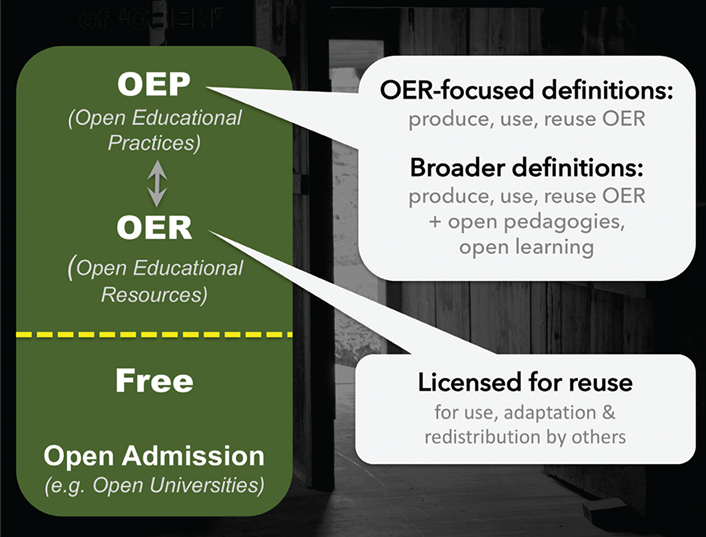
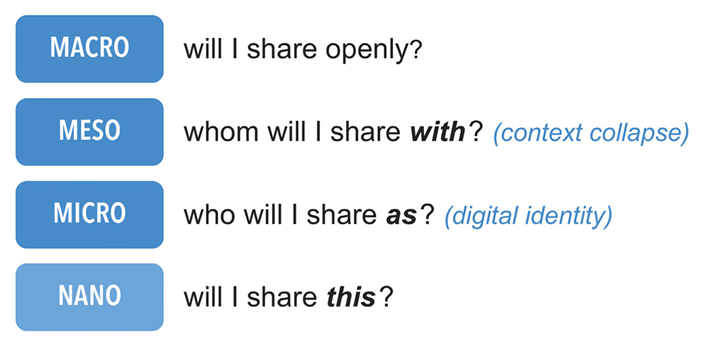
In 2014, administrators at Central Piedmont Community College (CPCC) in Charlotte, North Carolina, began talks with members of the North Carolina State Board of Community Colleges and North Carolina Community College System (NCCCS) leadership about starting a CBE program.
Building on an existing project at CPCC for identifying the elements of a digital learning environment (DLE), which was itself influenced by the EDUCAUSE publication The Next Generation Digital Learning Environment: A Report on Research,1 the committee reached consensus on a DLE concept and a shared lexicon: the “Digital Learning Environment Operational Definitions,
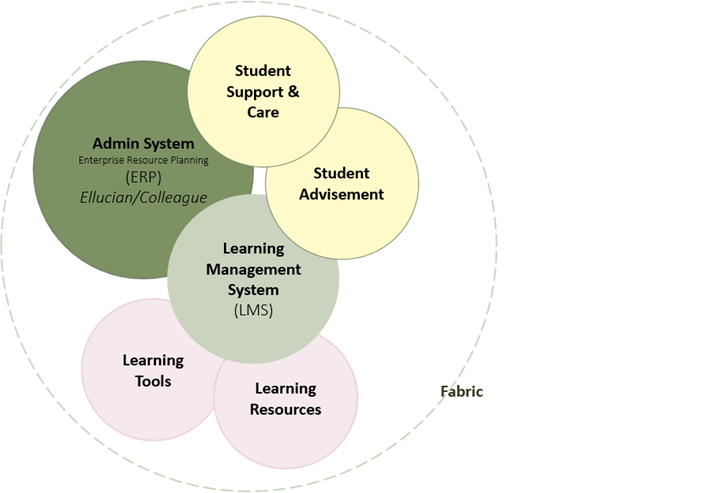
http://www.cast.org/whats-new/events/2018/07/4th-annual-udl-symposium.html
This year’s UDL Symposium was an opportunity to come together as a community to explore the promise of Universal Design for Learning for empowering learners. By engaging in sessions designed to encourage critical conversations, problem-solving, and hands-on exploration, participants considered empowerment through a UDL lens. Participants left with a deeper understanding of the important role empowerment plays in learning and with concrete examples of ways to leverage UDL for these critical aims.We hope our participants left with the confidence and the motivation to apply their learning to their practice—and with a new network of colleagues to encourage and support their efforts.
Organiser: Fatima Batool (The Alan Turing Institute and WiDS Ambassador)
Date: 6 April 2018
Venue: The Alan Turing Institute
The Stanford Women in Data Science conference (WiDS) is a one day global conference that will bring data scientists together to share cutting edge research. The conference aim is to inspire and encourage data scientists worldwide and exclusively support women in the field.
We will proudly host WiDS at The Alan Turing Institute. The conference will feature eminent female speakers through technical talks, lunchtime discussions on data science (topics to be announced shortly), a panel discussion and networking event.
The conference programme and speaker information will be soon available through the conference website. The event will be available worldwide via live streaming and the conference talks will be broadcast online.
The event will provide great opportunities to connect with potential mentors, collaborators and peers; hear about recent advancements in data science and explore new research dimensions.
Speakers:
Cecilia Lindgren
Mihaela van der Schaar
Jil Matheson
Codina Cotar
Emma McCoy
Cecilia Mascolo
Kathy Whaler
Mariana Damova
We welcome all regardless of gender to join us on Friday 6 April 2018 for an excellent learning experience.
For more information email: events@turing.ac.uk
The EDUCAUSE Learning Initiative has just launched its 2018 Key Issues in Teaching and Learning Survey, so vote today: http://www.tinyurl.com/ki2018.
Each year, the ELI surveys the teaching and learning community in order to discover the key issues and themes in teaching and learning. These top issues provide the thematic foundation or basis for all of our conversations, courses, and publications for the coming year. Longitudinally they also provide the way to track the evolving discourse in the teaching and learning space. More information about this annual survey can be found at https://www.educause.edu/eli/initiatives/key-issues-in-teaching-and-learning.
+++++++++++
learning and teaching in this IMS blog
https://blog.stcloudstate.edu/ims?s=teaching+and+learning
https://www.pinterest.com/pin/317503842467023352/
http://www.talesfromaloudlibrarian.com/2017/03/lesson-in-library-on-how-to-spot-fake.html
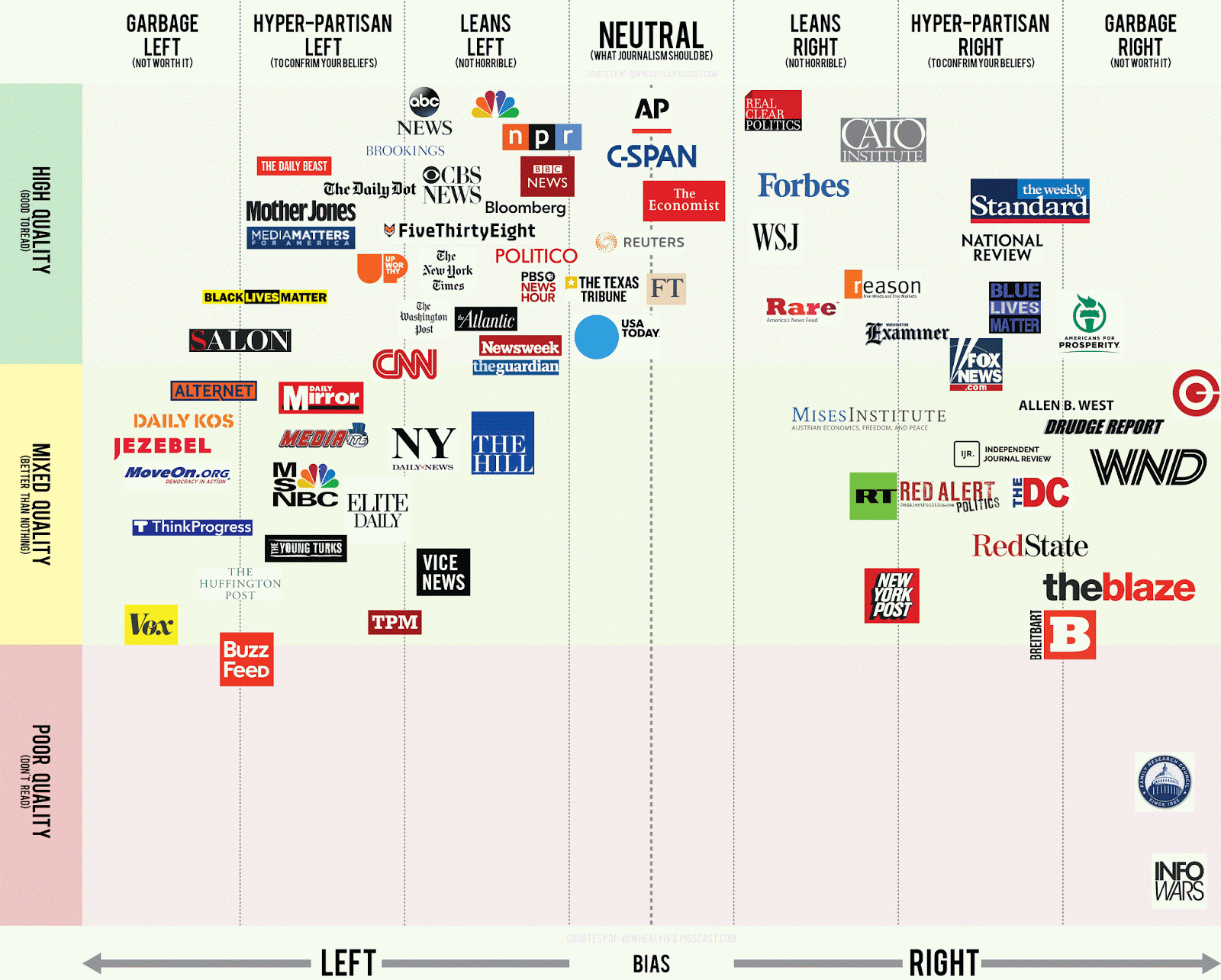
https://docs.google.com/presentation/d/1BNTqiE0p_YbZnDbUkRd9zR3W-DJSLrb0i99B58RgCI0/edit?usp=sharing
++++++++++++++++
more on fake news resources in this IMS blog
https://blog.stcloudstate.edu/ims?s=fake+news
Friezem, Y. (2017). THE MEDIA PRODUCTION HIVE: USING MEDIA EDUCATION FOR DIFFERENTIATED INSTRUCTION. Media Education, 8(1), 123-140
keywords: Media production, media literacy, Universal Design for Learning (UDL), executive
functioning, Media Production Hive
the theoretical framework of Universal Design for Learning (Rose & Meyer, 2002), teaching the same material via various strategies that cumulatively address needs and learning types of each student in the classroom (p. 126). acknowledge all the various types of learners in his class, such as visual learners, auditory learners, write-read learners, and kinesthetic learners, following Gardner’s (1983) multiple intelligence theory.
various ways of receiving, processing, and expressing information by different learners
various ways students can chose to engage in the process of learning
(p. 127) multiple means of representation guarantees each learner processes information in the best way they can, but it also provides repetition of the topic in various ways to deepen understanding
Students need to organize recently acquired knowledge in a strategic way and communicate their understanding to the teacher. Rose and Meyer (2002) created a detailed pathway for teachers to apply UDL using assistive technology.
Media education practices involve demystifying media messages and learning to use
media wisely through activities of evaluation, composition, introspection, and civic engagement. the links between the instructional design of lessons for all students and
the critical analysis, expression, and reflection on media messages are gradually
explored (Dalton, 2017).
Dalton, E. M. (2017). Universal design for learning: Guiding principles to reduce
barriers to digital & media literacy competence. Journal of Media Literacy Education, 9(2).
p. 128 Media production is the process of composing a message via a single or various media platforms. Media production includes creating videos, podcasts, presentations, posters, drawings, and books. With the increasing use of digital devices and applications, students are engaged in various ways to convey their messages using multiple ways of expression and multiple types of representations.

digital and media literacy competencies (Hobbs, 2010)
p. 137 challenges
Group dynamics often reveal power struggles among team members (Friesem, 2014). The responsibility of the media educator, who is not a mediator by training, is to find the way to mitigate the tension caused by differences among group members (Friesem, 2010). In addition, students have the tendency to use media production as a transgressive practice (Moore, 2011; Grace & Tubin, 1998). Facilitating the process of production involves constant reflection on the classroom power relationship using critical and pragmatic lenses.
Grace, D., & Tobin, J. (1998). Butt jokes and mean-teacher parodies: Video production
in the elementary classroom. In D. Buckingham (Ed.), Teaching popular culture: Beyond radical pedagogy (pp. 42-62). London, UK: University College London Press.
The discourse about the implementations of UDL with digital technology has been broad and used for several research studies (Rose & Meyer, 2002).
Rose, D. H., & Meyer, A. (2002). Teaching every student in the digital age: Universal
design for learning. Alexandria, VA: Association for Supervision and Curriculum Development (ASCD).
++++++++++++++++++++++
more on media literacy in this IMS blog
https://blog.stcloudstate.edu/ims?s=media+literacy
more on instructional desing in this IMS blog
https://blog.stcloudstate.edu/ims?s=instructional+design
https://www.pinterest.com/pin/74098356345912486/

__________________________________________________________
https://www.pinterest.com/pin/AXNoEaNP-QIGmW8OsassUdLJIaxVtpB4eUHVsS2OhpaV5EQMbE4gnbY/

________________________________________________
The Why? and How? in Literature Review according to the Research Proposal Flow Chart
https://www.pinterest.com/pin/282389839112379077/

_______________________________________________________________
How does your literature review fit in the overall Thesis plan
https://www.pinterest.com/pin/AbtT8eFqFlSm4BE30u-x_Ji6Zyphn-bgn2-4TsLnqt3XKdMmzHjBn2U/

++++++++++++++
more on writing and proofreading in this IMS blog
https://blog.stcloudstate.edu/ims?s=writing
https://blog.stcloudstate.edu/ims?s=proofreading
====================================================
1 credit, summer 2016
Technology forecast for education: https://blog.stcloudstate.edu/ims/2016/01/27/4710/
Course Description
This synchronous online course will introduce school administrators to the multitude and complexity of educational technology issues. Through group discussions and exercises, the course will focus on the development of knowledge, skills and depositions to effective professional practice in educational leadership. The goal of the course is to develop knowledge and understanding of appropriate application of technology in the teaching and learning process and in the management of educational programs.
Information and experience in the course will include review of the latest trends in technology. Familiarity to acquisition of expertise will be sought in understand and use of Web 2.0 and Web 3.0, as well as social media, multimedia and interactivity and how it affects school life as well as the role of the educational leader. Specific attention will be paid to the importance and ability to develop and maintain policies, which reflect the ever-changing world of technology. Auxiliary, but no less important issues such as legal issues, copyright issues, ethics and other forms of digital citizenship will be discussed.
Course Objectives:
Upon successful completion of this course the student will:
| Course Objective | Knowledge | Skill | Disposition | Impact |
| 1. Demonstrate knowledge and the use of related technologies appropriate to the management of a school # | o | o | ||
| 2. Demonstrate knowledge and the use of related technologies appropriate to the instructional program of a school # | o | o | ||
| 3. Demonstrate knowledge and the use of various types of related technologies for supporting the instructional program of the school # | o | o | ||
| 4. Demonstrate knowledge of planning and management procedures and policies for the appropriate use of technological resources to serve the mission of the school # | o | o | ||
| 5. Demonstrate knowledge of common computer and related technological applications # | o | o | ||
| 6. Identify gender & diversity issues related to technology in education | o | o | o | |
| 7. Demonstrate knowledge of adaptive technology devices for individuals with special needs | o | o | o | o |
| 8. Demonstrate skill in the use of technology for materials preparation, presentations, record keeping, computation, communication, information / data collection and management, and the effective use of the Internet | o | o | o | |
| 9. Demonstrate an understanding of legal issues, including copyright issues, related to educational technology | o | o | ||
| 10. Demonstrate an understanding of the importance of ethical practice in the use of technology | o | o | ||
| 11. Demonstrate knowledge and understanding of administrative policies and procedures that promote appropriate utilization of technology by school personnel | o | o | o | |
| 12. Demonstrate familiarity with appropriate professional standards related to educational leadership and technology | o | o | o | o |
| 13. Demonstrate an understanding of the digital age learning culture, digital citizenship in particular | o | o |
National Educational Technology Standards for Administrators.
http://www.iste.org/standards/ISTE-standards/standards-for-administrators
Demonstrate familiarity with appropriate professional standards related to educational leadership and technology
http://www.ccsso.org/Documents/2015/ProfessionalStandardsforEducationalLeaders2015forNPBEAFINAL.pdf
Resources On Line
IMS Technology blog: https://blog.stcloudstate.edu/ims/
Twitter: #edtech ; #edtechchat ; #edtechUK; @Edtech_K12
Facebook: #edtech ; #edleadership
Pinterest #edtech; #edleadership ; #edtechleadership
Agency for Instructional Technology http://www.ait.net
Center for Technology and Teacher Education http://www.teacherlink.org
Center for Children and Technology http://www.edc.org/CCT/
T.H.E. Journal (Technology Horizons in Education Online Journal) http://www.thejournal.com
Cybertimes Navigator (New York Times) http://www.nytimes.com/navigator
International Society for Technology in Education (ISTE) http://cnets.iste.org/
Technology Standards for School Administrators (TSSA) http://cnets.iste.org/tssa
ISTE curriculum and Content Area Standards http://Cnets.iste.org/currstands/
Preparing Tomorrow’s Teachers to use Technology (PT3) http://www.pt3.org
Assistive Technology information: http://www.abilityhub.com http://www.enablemart.com
++++++++++++++++++++++++++++++++++++++++++++++++++++++++++++++++++++++++++++++
1 credit, Summer 2016
Course Description
This course seeks hands-on experience in integration of educational technology into the classroom. Students will learn to select opportunities for application [or not] of technology in education. The course will provide a hands-on experience for educational leaders to understand the application of technology in the curriculum process. Topics of consideration include instructional design, media and formats, devices, telecommunications and social interactivity. The course will provide an opportunity to apply technology knowledge and experience in hands-on exercises for curriculum management as well as monitoring student achievement progress. Further discussions and practical approach will include modern, effective and efficient ways of communications among parents, students, faculty and administration. The course offered in synchronous online mode and F2F mode.
Objectives/Outcomes
Upon successful completion of this course the student will:
Universal Design for Learning (UDL)
http://www.udlcenter.org/aboutudl/whatisudl
The ISTE National Educational Technology Standards (NETS•T) and
Performance Indicators for Teachers
https://www.kent.edu/sites/default/files/file/ISTEstandards.pdf
1 credit, Summer 2016
Course Description
Course Description
This class will support teacher leaders and school administrators in reviewing and systematizing the fast aspects of modern electronic technologies. Based on a foundational better understanding of how technologies work, future educational leaders will develop skills and practice the application of ideas, tactics and methods for better integration of technologies in the teaching and learning process as well as the creation of better policies and procedures.
The course is designed to bring research and analytical skills and build structure in the process of resolving technology issues, which educational leaders face in modern schools, including hardware and software problems, networks and computers, curriculum and teaching and learning methods.
The course will offer discussions as well as practical solutions such as social media (e.g. Twitter) for professional development, online tools for teacher evaluation, online tools for collaboration and creativity, immediate and future trends, which already impact education and educational leadership.
The course offered in synchronous online mode and F2F mode.
Objectives/Outcomes